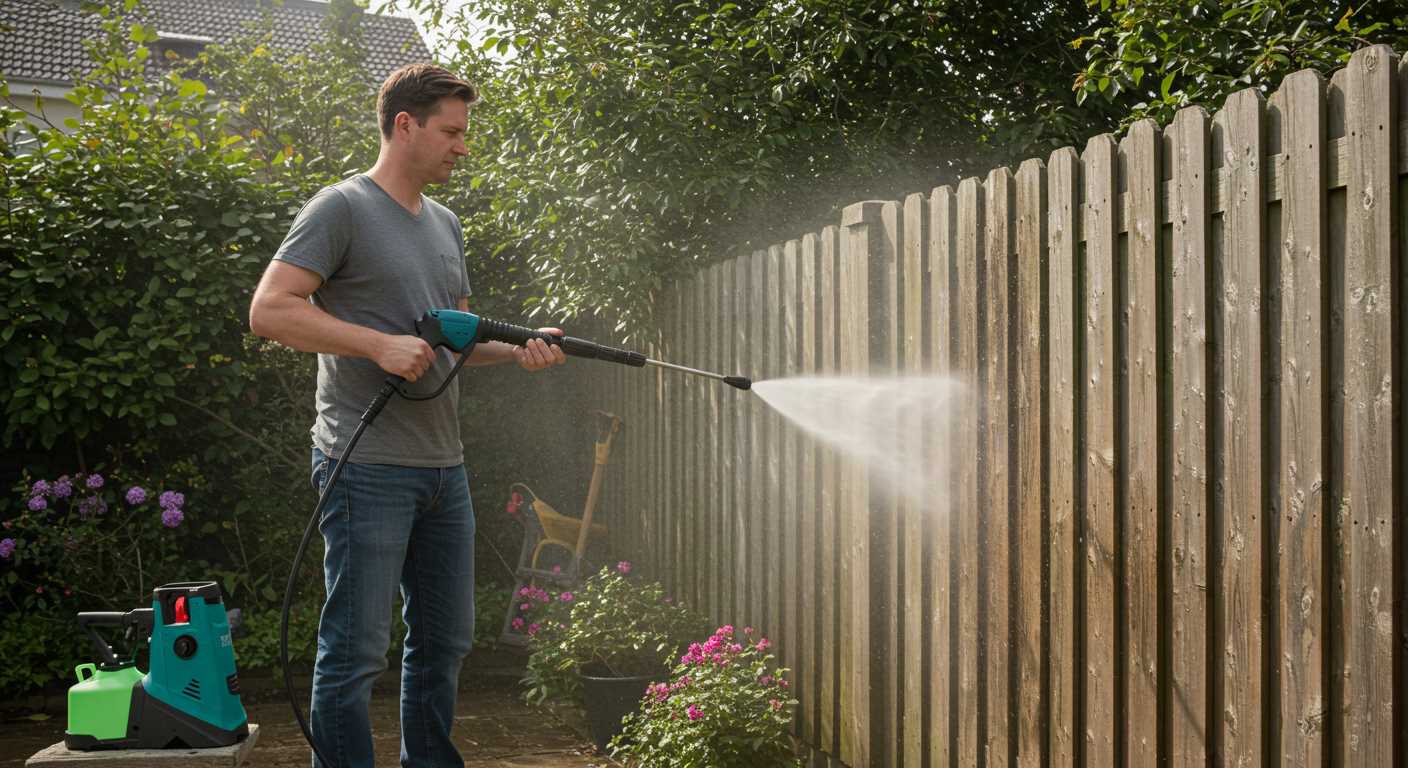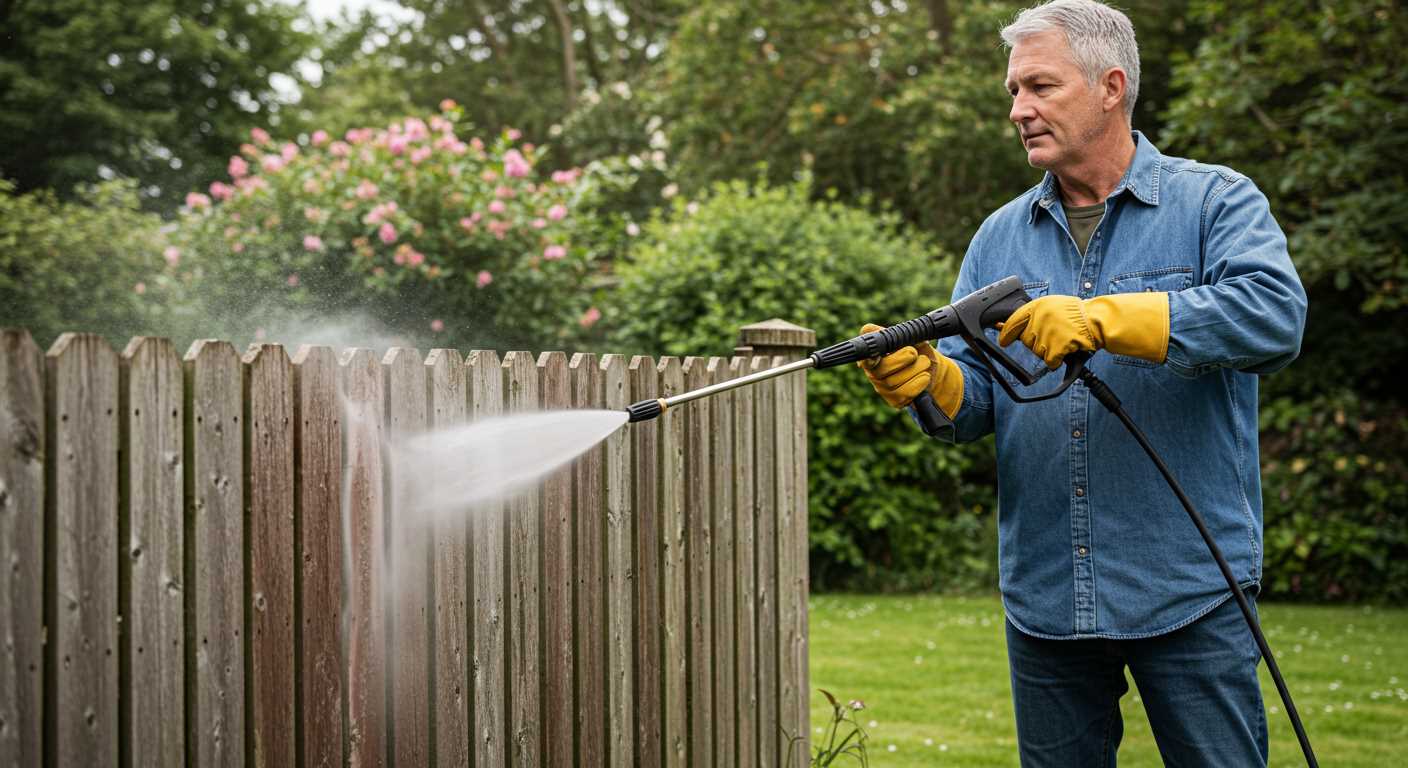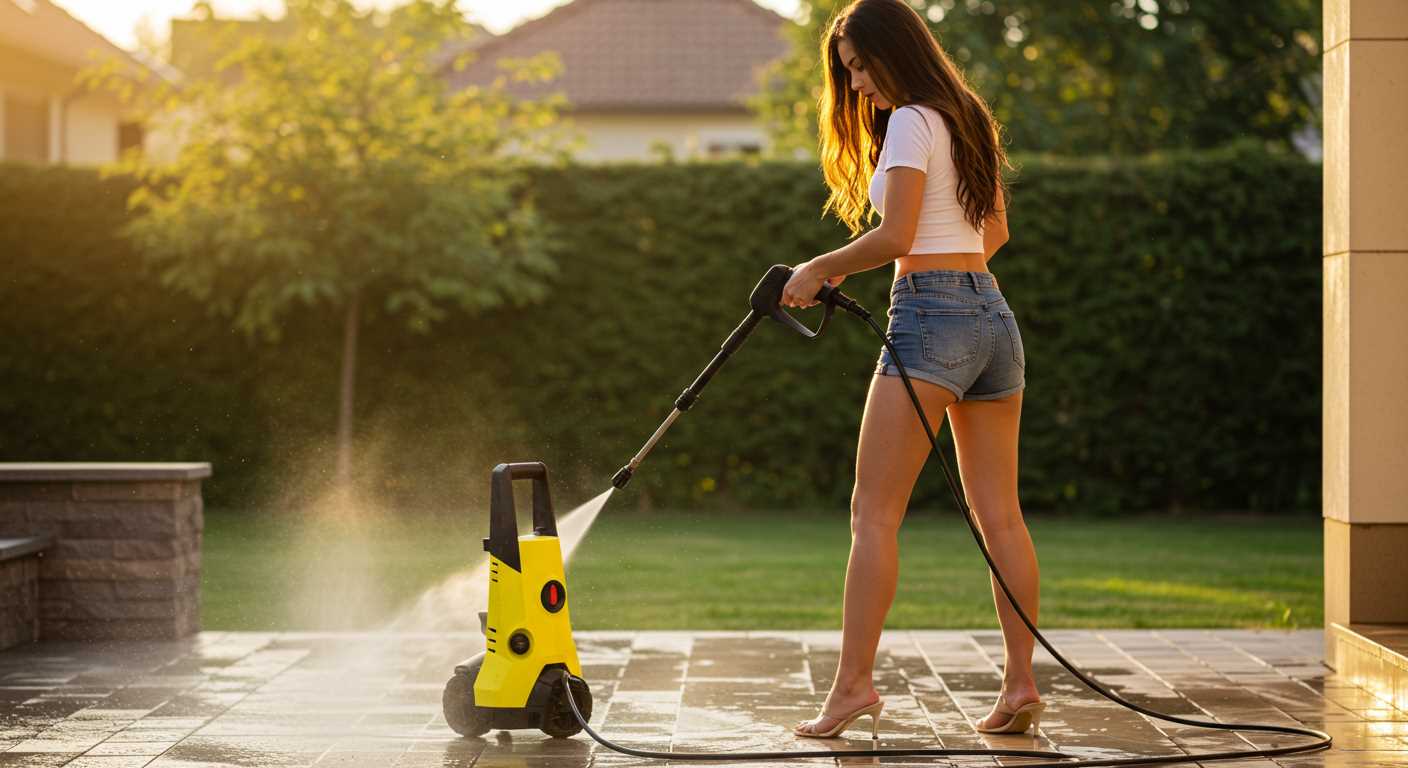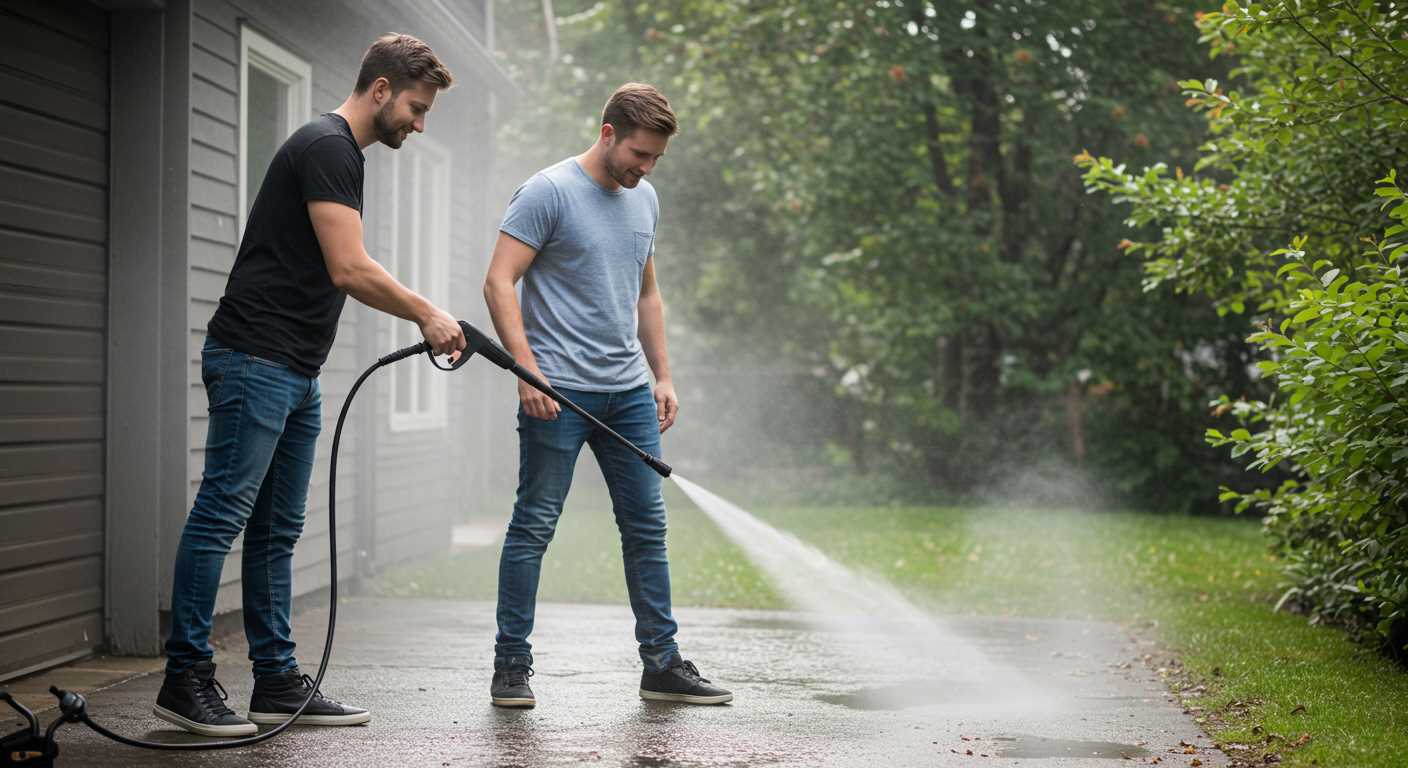



Using a high-powered cleaning device on composite surfaces requires caution. Directly applying strong jets can lead to damage, such as scratches or surface deterioration. Therefore, a gentle approach is recommended. For maintenance of composite materials, a two-step process generally works best: first, rinse with low pressure to remove dust and debris, then progressively apply a mild cleaning solution with a soft brush or cloth.
When tackling stubborn stains, it’s wise to use nozzles that create a wider spray pattern. This variation disperses the pressure, minimising the risk of surface abrasion. Stains from mould or mildew can be more effectively treated with a solution specifically formulated for composite surfaces, ensuring both cleanliness and longevity of the material.
Regular cleaning intervals contribute substantially to the material’s durability and appearance. Ideally, aiming for a thorough clean at least twice a year aids in preventing long-term wear. Additionally, always consult the manufacturer’s guidelines for cleaning recommendations tailored directly to the type of composite surface you have.
Understanding Trex Decking Material Properties
Composite materials exhibit unique characteristics that influence their maintenance and cleaning methods. This specific type of synthetic substance combines wood fibres and plastic, significantly enhancing durability and resistance to the elements.
The structure of this composite allows it to withstand various environmental conditions, minimizing fading and warping over time. This resilience makes it suitable for outdoor applications where exposure to moisture and UV rays is inevitable.
Regarding staining, the surface is designed to be non-porous, making it less likely to absorb liquids. Any spills can generally be wiped away easily, reducing the need for intensive cleaning efforts.
When it comes to scratching, while this material is more resistant than traditional wood, it is not entirely scratch-proof. Caution is advised when moving furniture or using abrasive tools.
| Property | Description |
|---|---|
| Durability | Resists weathering and does not splinter |
| Moisture Resistance | Reduces the risk of rot, mould, and mildew |
| Fading | Maintains colour integrity despite sun exposure |
| Stain Resistance | Non-porous surface makes it easy to clean |
| Scratching | Improved resistance compared to natural wood |
Another advantage is the material’s low maintenance requirements. Regular cleaning using non-abrasive methods suffices to maintain its appearance over the years. Typical cleaning agents and techniques can suffice without degrading the surface.
Finally, selecting products designed specifically for this composite type further enhances longevity and aesthetic appeal, ensuring that the investment retains its value throughout its lifespan.
Recommended Pressure Settings for Cleaning
For optimal results while maintaining the integrity of composite materials, I advise setting the machine to a pressure of 1,500 to 2,000 PSI. This range effectively removes dirt and grime without causing damage.
Distance Matters
Maintaining a distance of 8 to 12 inches from the surface is crucial to prevent any potential harm. Adjusting the distance allows for better control over the cleaning process.
Choosing the Right Nozzle

The selection of nozzle type is significant. A 25-degree nozzle typically works well for cleaning composite surfaces, ensuring thorough removal of debris while minimising the risk of scratches.
Lastly, for challenging stains, a cleaner specifically formulated for composite materials can be an excellent addition to the cleaning regime, enhancing effectiveness without compromising surface quality.
Safe Distance and Angle for Cleaning
Maintaining a distance of approximately 12 to 18 inches from the surface is crucial for preventing damage. This range allows for effective dirt removal without the risk of gouging or etching the material.
Optimal Angle
The nozzle should be held at a 45-degree angle for maximum cleaning efficacy. This position helps direct the water away from the surface, reducing the likelihood of moisture penetration in seams and joints.
Movement Technique
Utilising a sweeping motion will encourage even cleaning. Avoid focusing on a single spot for an extended period; this can lead to surface degradation. Always keep the nozzle in motion to ensure a thorough and safe cleaning experience.
Cleaning Solutions: What to Use with a Pressure Washer
For optimal cleaning results, select solutions specifically designed for composite materials. Avoid harsh chemicals or bleach, as they can degrade the surface. Here are some recommended cleaning agents:
- Cleansing Detergents: Use mild, biodegradable soaps formulated for outdoor surfaces. They effectively break down dirt and grime.
- Mold and Mildew Removers: A solution with a focus on removing organic growth will maintain the integrity of the material while preventing future issues.
- Enzyme-Based Cleaners: These help to digest stains and dirt without causing damage, making them safe for regular maintenance.
Mixing Guidelines

Always mix according to the manufacturer’s instructions to ensure safe and effective cleaning. Generally, a 10:1 water-to-cleaner ratio works effectively for standard applications. For stubborn stains, you might adjust this to a 5:1 ratio, but test on a small area first.
Application Method
Apply cleaning solutions using a low-pressure setting directly onto the surface. Let the solution sit for several minutes to penetrate and lift dirt. Rinse thoroughly, ensuring no residues remain, as they can attract further dirt if left behind.
Common Mistakes to Avoid when Operating a High-Pressure Cleaning Device

It is essential to maintain an appropriate distance from the surface while cleaning. Getting too close can cause damage to the material. A distance of at least 12 inches is advisable to prevent unwanted wear or marks.
Incorrect Pressure Setting
Using a setting that is too high can easily lead to scratches or surface damage. Always begin with the lowest setting and gradually increase as needed, ensuring the chosen level is suitable for the specific cleaning task.
Neglecting Surface Testing
Failing to test a small, inconspicuous area before commencing full cleaning can result in unexpected damage. Perform a spot test first to determine how the surface reacts to the applied force and cleaning solution.
Over-saturating the area with water can lead to pooling, making it difficult for the material to dry properly. This can result in mould or mildew growth if not addressed promptly. Keep the flow controlled and manage the water run-off effectively.
Using harsh chemicals not meant for high-pressure cleaning machines can damage the internal components of the equipment and lead to suboptimal results. Always refer to the manufacturer’s guidelines for acceptable cleaning solutions.
Lastly, failing to wear appropriate personal protective equipment (PPE) is a significant oversight. Safety goggles and non-slip footwear should be worn to safeguard against debris, slippery surfaces, and any potential injuries from high-pressure water jets.
Maintenance Tips for Trex Decking Post-Cleaning
After the cleaning session, it’s crucial to carry out specific maintenance tasks to prolong the lifespan and appearance of the composite surface. First, inspect the area for any signs of damage or wear that may have emerged during the process. Minor scratches or gouges should be addressed promptly to prevent moisture infiltration.
Regular Inspections
Conduct regular checks for loose boards, fasteners, or any other structural issues. Tighten any screws or brackets as necessary. This proactive approach helps maintain stability and avoids larger repairs down the line.
Routine Care

Employ a soft-bristle broom or a microfiber cloth for periodic cleaning, removing dirt and debris that can accumulate between cleanings. For stubborn stains, a mixture of mild soap and warm water can be effective. Rinse thoroughly with clear water to prevent residue buildup. Additionally, consider applying a specialised composite deck cleaner every 6 to 12 months for deeper cleaning, especially in high-traffic areas.
Invest in a protective sealant designed for composite materials to help resist moisture and UV damage. Reapply this sealant as recommended by the manufacturer to maintain optimal protection. This periodically applied barrier not only enhances appearance but also safeguards against fading and staining.
Lastly, clear any organic debris such as leaves and branches, which can facilitate mould growth and staining. Regular attention to these details will ensure your outdoor area remains inviting and in excellent condition for years to come.







